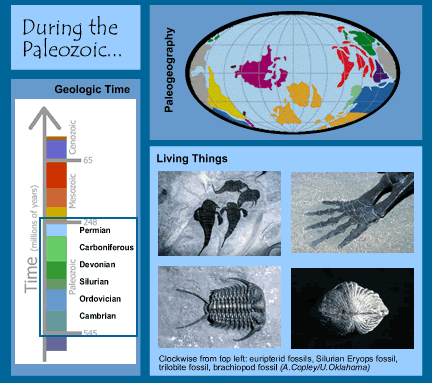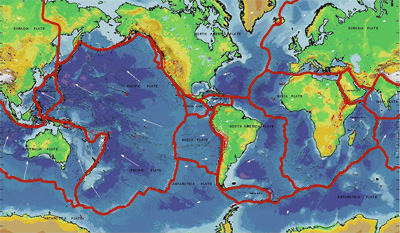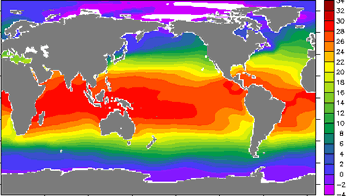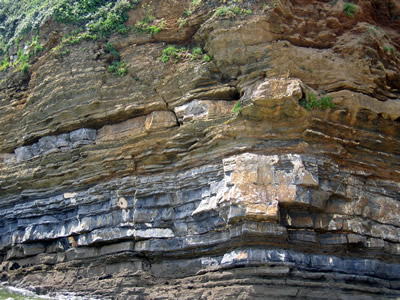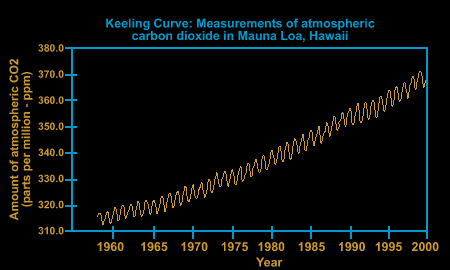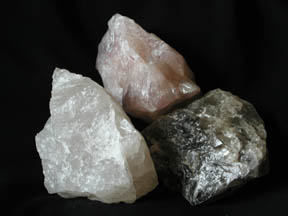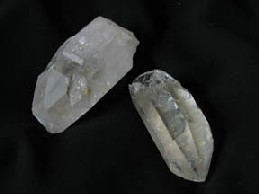Characteristics of the Paleozoic
Click on image for full size
L.Gardiner/Windows to the Universe (fossil images courtesy of AGI Imagebank)
Click on image for full size
L.Gardiner/Windows to the Universe (fossil images courtesy of AGI Imagebank)
Happenings During the Paleozoic Era (545-248 Million Years Ago)
Time:
- 545 to 248 million years ago
- (See the geologic timescale!)
Geography:
- Early in the Paleozoic the continents were far apart, but moving tectonic plates caused continents to move together into one large continent (a supercontinent!) called Pangaea.
Climate:
- Glaciers formed 430 million years ago. They may have only lasted one or a few million years. During this time, ice covered the northern part of Africa, which was located over the South Pole.
- Climate
models have been used to help understand weather
and regional climates
of the supercontinent Pangaea. The models suggest that monsoons affected the
subtropical east coast and that interior of Pangaea was dry.
Evolutionary Events:
- According to fossils, a large number of animals (including the distant ancestors of many modern animals) evolved between 530 and 520 million years ago.
- Invertebrates (animals without backbones) such as corals, brachiopods, mollusks, and arthropods such as trilobites ruled the oceans in the early and middle parts of the Paleozoic.
- Vertebrates (including fish, amphibians, and reptiles) began to flourish in the later Paleozoic. Animals and plants populated the land (but many still lived in the ocean!).
- About 440 million years ago the Late Ordovician Mass Extinction occurred. It was the second largest mass extinction of all time. Over 10 million years, many marine species became extinct including those that built reefs.
- At the end of the Paleozoic, about 250 million years ago, as many as 96%
of species in the oceans became extinct. They didn’t die all at once.
It took over 8 million years for the mass extinction to wipe out all those
species. This was the largest mass extinction of all time.
Last modified June 1, 2005 by Lisa Gardiner.


